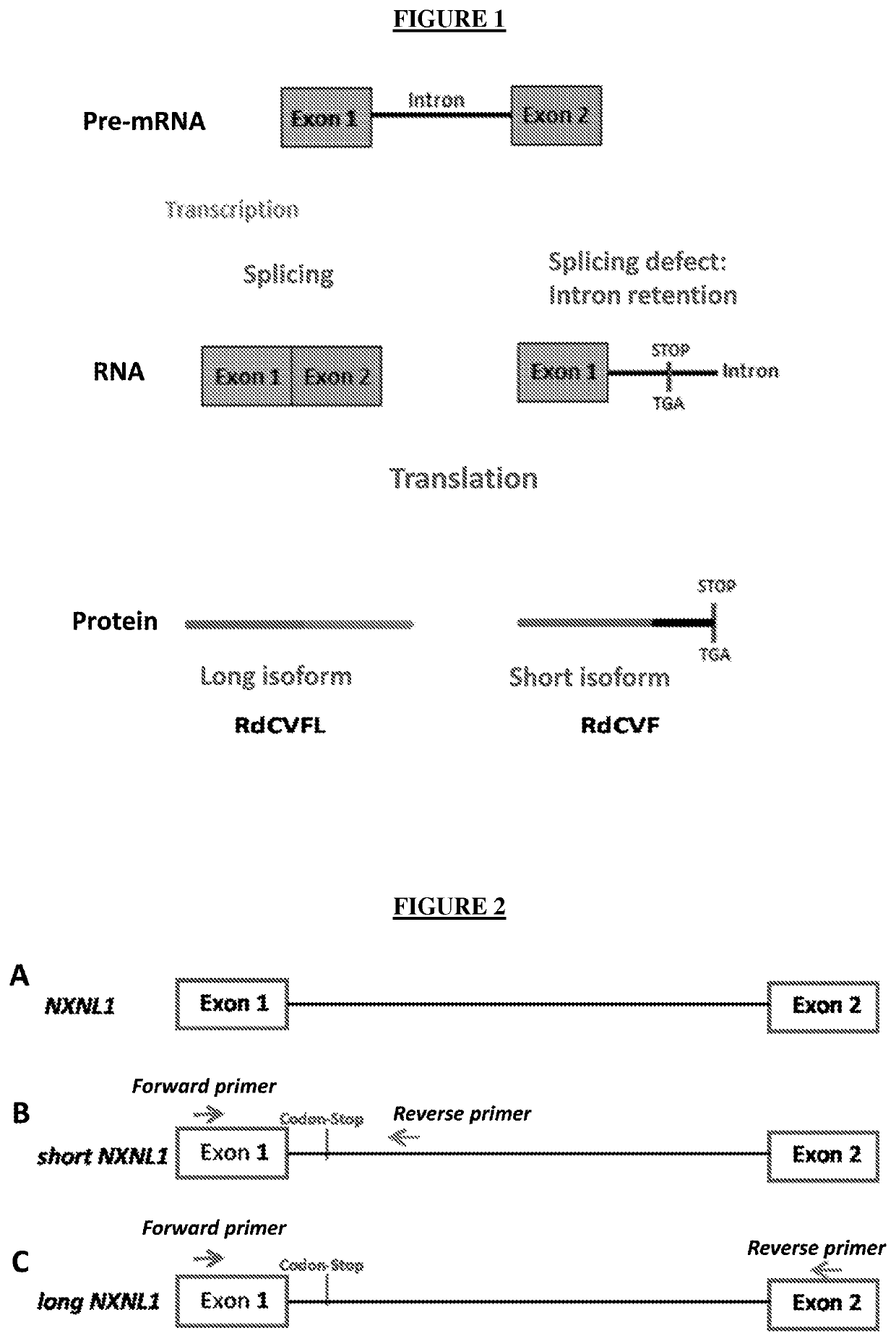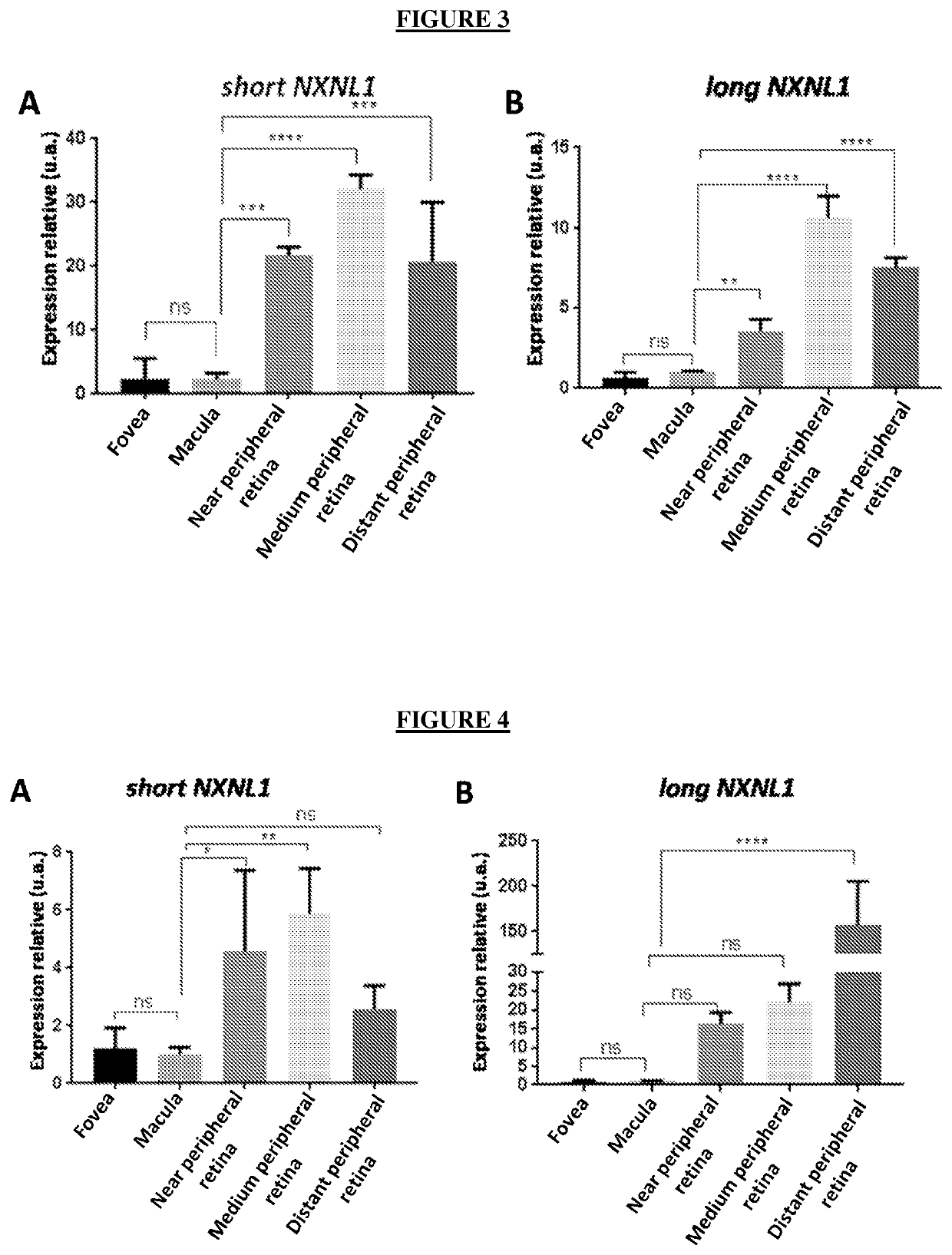Method for treating retinal degeneration disease by administering nucleolin polynucleotide or polypeptide
a nucleotide or polypeptide technology, applied in the direction of peptide/protein ingredients, drug compositions, viruses/bacteriophages, etc., can solve the problems of cone degeneration, inexorably blindness, loss of rods, etc., to promote the production of short messengers, promote nxnl1 intron retention, and promote alternative splicing
- Summary
- Abstract
- Description
- Claims
- Application Information
AI Technical Summary
Benefits of technology
Problems solved by technology
Method used
Image
Examples
examples
[0086]Material and Methods
[0087]Retina Dissection
[0088]The macaque or human eyeballs are placed in a Petri dish with PBS so that the retina does not dry. They are then washed twice in washing solution and once in an independent CO2 medium (ThermoFisher). One of the eyeballs is pierced with a needle to cut and remove the cornea using a pair of scissors and forceps. The choroid is removed and the sclera delicately detached from the optic nerve using a pair of scissors. The retinal pigmented epithelium (RPE) and vitreous are gradually detached from the retina in small cuts so as not to damage or tear. At this point, the retina has retained its curved shape and needs to be flattened. But before that, the vitreous humor, which has the consistency of a jelly, must be removed in one piece. To flatten the retina, several radial cuts are made using a scalpel blade. Next, fovea, macula, near peripheral retina, medium peripheral retina and distant peripheral retina were isolated.
[0089]Concerni...
PUM
| Property | Measurement | Unit |
|---|---|---|
| pH | aaaaa | aaaaa |
| pH | aaaaa | aaaaa |
| temperature | aaaaa | aaaaa |
Abstract
Description
Claims
Application Information
 Login to View More
Login to View More - R&D
- Intellectual Property
- Life Sciences
- Materials
- Tech Scout
- Unparalleled Data Quality
- Higher Quality Content
- 60% Fewer Hallucinations
Browse by: Latest US Patents, China's latest patents, Technical Efficacy Thesaurus, Application Domain, Technology Topic, Popular Technical Reports.
© 2025 PatSnap. All rights reserved.Legal|Privacy policy|Modern Slavery Act Transparency Statement|Sitemap|About US| Contact US: help@patsnap.com



